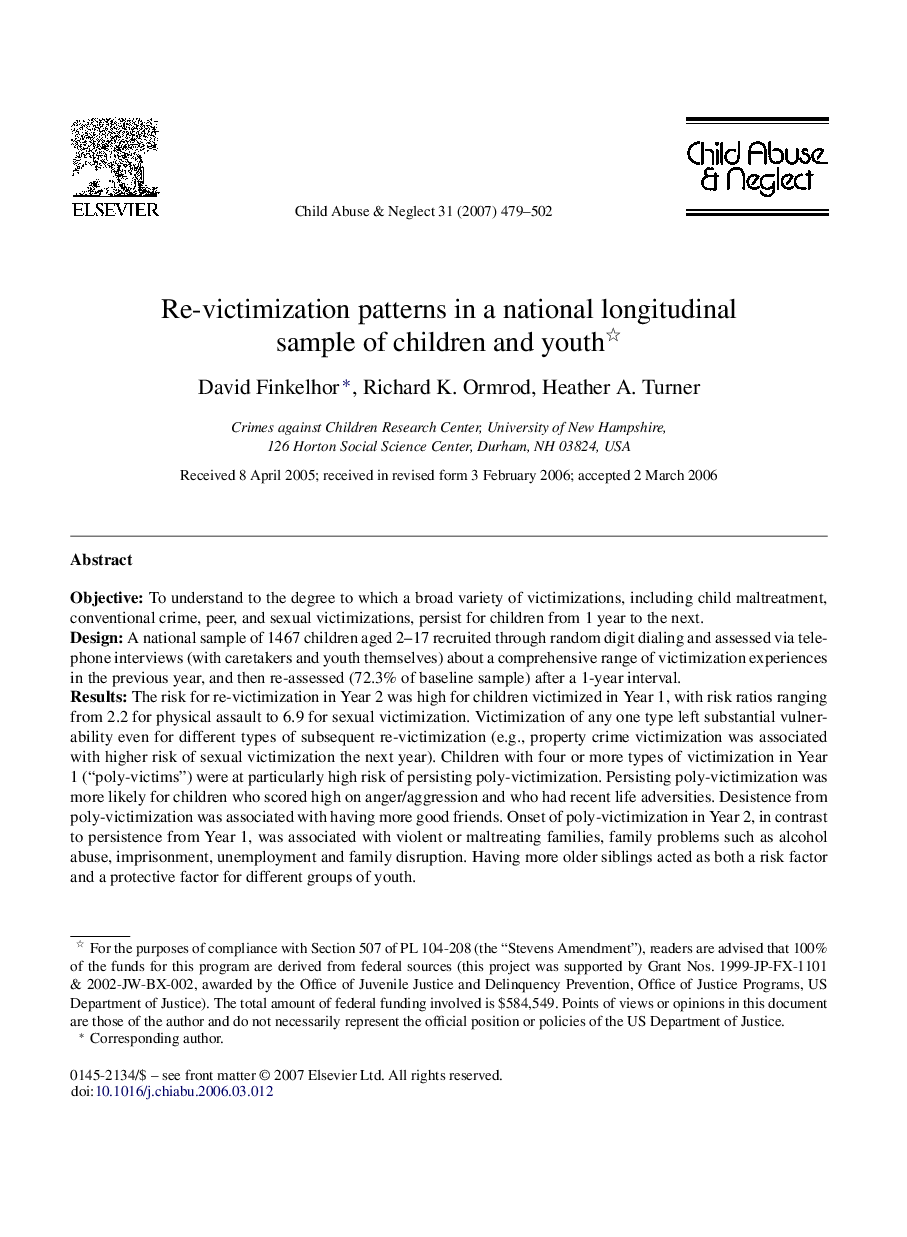| کد مقاله | کد نشریه | سال انتشار | مقاله انگلیسی | نسخه تمام متن |
|---|---|---|---|---|
| 345595 | 617534 | 2007 | 24 صفحه PDF | دانلود رایگان |

ObjectiveTo understand to the degree to which a broad variety of victimizations, including child maltreatment, conventional crime, peer, and sexual victimizations, persist for children from 1 year to the next.DesignA national sample of 1467 children aged 2–17 recruited through random digit dialing and assessed via telephone interviews (with caretakers and youth themselves) about a comprehensive range of victimization experiences in the previous year, and then re-assessed (72.3% of baseline sample) after a 1-year interval.ResultsThe risk for re-victimization in Year 2 was high for children victimized in Year 1, with risk ratios ranging from 2.2 for physical assault to 6.9 for sexual victimization. Victimization of any one type left substantial vulnerability even for different types of subsequent re-victimization (e.g., property crime victimization was associated with higher risk of sexual victimization the next year). Children with four or more types of victimization in Year 1 (“poly-victims”) were at particularly high risk of persisting poly-victimization. Persisting poly-victimization was more likely for children who scored high on anger/aggression and who had recent life adversities. Desistence from poly-victimization was associated with having more good friends. Onset of poly-victimization in Year 2, in contrast to persistence from Year 1, was associated with violent or maltreating families, family problems such as alcohol abuse, imprisonment, unemployment and family disruption. Having more older siblings acted as both a risk factor and a protective factor for different groups of youth.ConclusionChildren previously victimized in 1 year are at higher risk of continued victimization, and the poly-victims are at particular risk. These findings suggest the potential merit of identifying these high-risk children and making them priority targets for prevention efforts.
Journal: Child Abuse & Neglect - Volume 31, Issue 5, May 2007, Pages 479–502